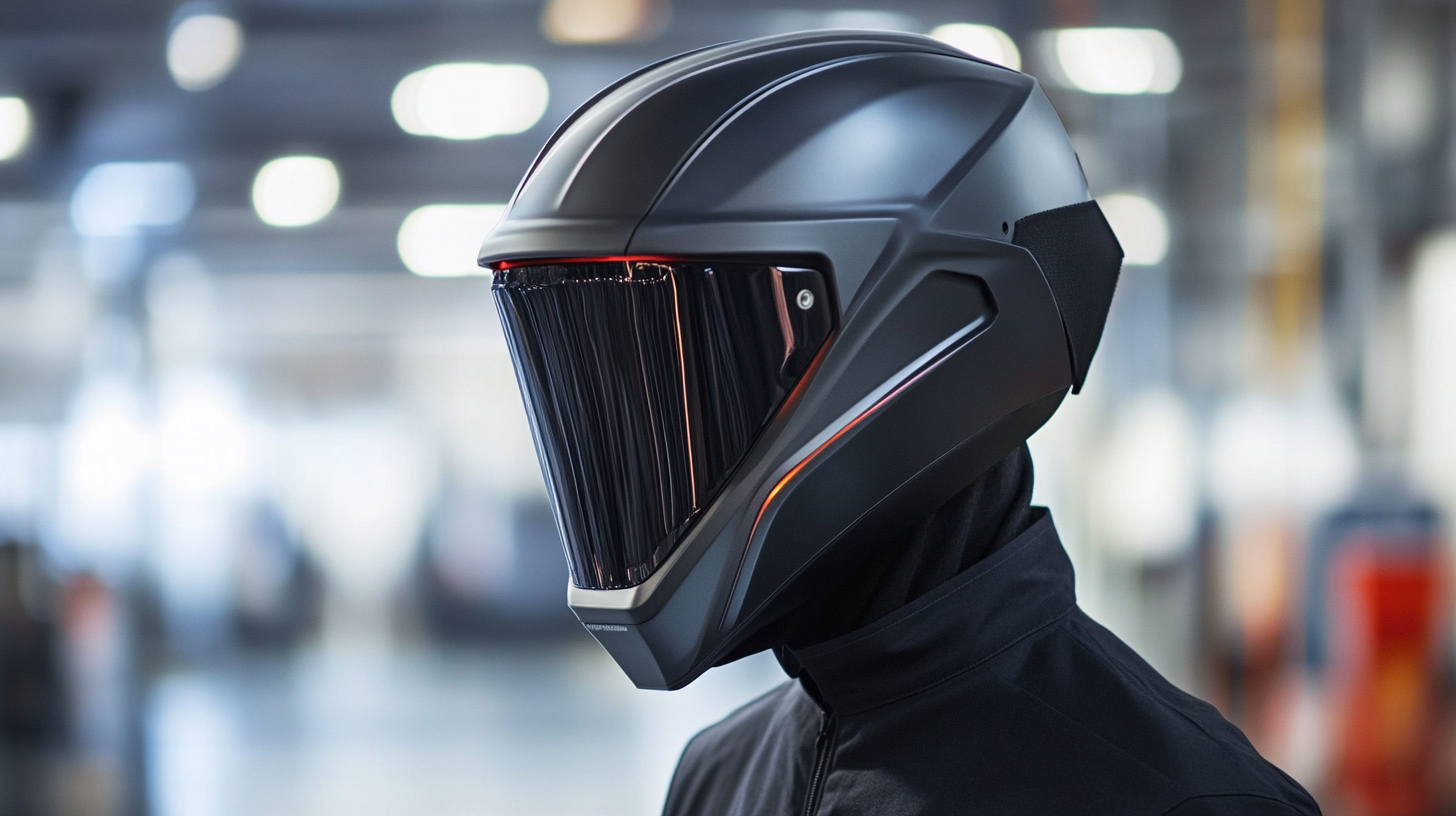Probably the most important aspect in welding safety and comfort is a welding helmet. According to a research report by Grand View Research, the global welding helmets market is expected to reach USD 1.16 billion by 2025 due to increasing industrial activities and strict safety regulations in various sectors. Several manufacturers are available, each offering unique features and technologies. The well-known welding helmet manufacturer's choice can have a significant impact on the quality and efficacy of your welding tasks.
Welding helmets protect welders from thermal radiation and unwanted sparks and help improve visibility in more complex welding operations. According to MarketsandMarkets, the advanced auto-darkening welding helmets are expected to witness significant growth in demand as a response to the industry's requirement of improvements for better safety. Hence, professionals must understand the critical elements that indicate a good welding helmet manufacturer featuring the best welding equipment for business purposes. Here are ten essential tips on how to select the right welding helmet manufacturer that meets your needs.

In welding helmets, it is vital to know the types to be able to choose what suits the user best. Welding helmets have basically two types: passive and auto-darkening. Usually, a passive helmet consists of a fixed shade lens that offers good protection while manual adjustment is necessary when changing tasks. Lower-priced, it could however become inconvenient for welders who frequently shift from one type of welding to another. The auto-darkening ones have lenses that adjust automatically to the lights during the welding process and can also be used for other activities without welding. This technology can bring a good amount of improvement to a welder's efficiency and comfort. Then besides the main types, there are features like response time of the lens, viewing area, and protection level from UV/IR one should consider. Response time is the most critical for safety since the quicker response helps with eye damage protection from sudden flashes. A larger viewing area allows better visibility of the workpiece and of the surrounding environment, which is key during some of the more complicated welding tasks. Feature such as grind mode and shade controls, among others, can definitely facilitate usability geared towards the requirements of different jobs in welding. In a nutshell, knowledge about the types and features of welding helmets is essential to welders picking the right manufacturer. This is the knowledge that empowers them to use the safest helmet that works with their personal working conditions and preferences.

Check what the picture is showing. An extensive explanation has been provided for why reputation and experience matter when selecting a welding helmet supplier. Good suppliers, in the longstanding tradition of manufacturing, usually hold reputation-based characteristics and principles such as "quality" and "safety." Reports suggest that manufacturers who have been in operation for more than ten years reflect higher innovation and reliability-indices, which are critical issues for paramount scenarios like oil and gas equipment manufacture. Progresses in welding technologies are greatly associated with mature manufacturers who understand the dynamics of welding processes involved and their customers' specific requirements.
Recent developments in the fabrication of high-end equipment emphasize the importance of selecting a manufacturer with not only technical skills but also experience with solving very complex welding problems. For example, real advancement has been made by companies engaged in laser and laser-arc hybrid welding, significant to the improvement of production quality and efficiency. The successful application of these technologies in intelligent manufacturing processes optimizes performance and reduces production costs, which is testimony enough that only an experienced manufacturer can deal with the requirements of modern manufacturing.
The trend towards being "smart factories" places added emphasis on the need for manufacturers to start embracing digital transformation and technological innovation. Leaders in manufacture are now using digital platforms to optimize their operations, enhancing productivity, and satisfying custom manufacturing requirements. This evolution in manufacturing highlights the need to partner with manufacturers that have a solid foundation but also have the ability to change with the rapid changes of technology and industrial requirements. Proper investigation of the background of a manufacturer and their input to technological development can go a long way in determining the success of a given project and the satisfaction of all participants.

There are a number of key aspects you should look for to ensure that you select a quality welding helmet among which is looking for a good lens. The shade range should be appropriate for a variety of welding applications. An auto-darkening one is also important for real-time protection. It alters the tint of the lens depending on the brightness of the arc. That's going to enhance visibility while reducing eye strain.
Another key aspect of concern should be the comfort. A well-fitting helmet has not only fit protection but also length of use without discomfort. Adjustable headgear also works with lightweight design conforming to the shape of one's head. The material of the helmet should also be given special consideration as an outer shell must be durable and heat resistant to provide adequate protection against the sparks and the heat.
Ventilation is also something that should not be missed. Such a ventilated helmet always allows cool and sweat-free wear while minimizing fogging that obstructs visibility. Last, but not least, check the warranty and customer service of the manufacturer. Reputable manufacturers are those that stand behind their products, offering support, guarantees, and some form of after-sale assistance towards protection of the investment in time.

For this reason, when deciding from whom to buy, the customer reviews and feedback on welding helmets can be of immense help in assessing the quality and reliability of products. The reviews truly bring out all the little real-life experiences that matter, such as the comfort factor, visibility, and general performance. Checking customers' reviews gives an idea of the specific trauma patterns a helmet holds up to against constant use and whether various welding environments specifically require such.
Also, take note of the frequency of any issues highlighted, as well as their nature. If numerous customers report similar complaints about durability or that the helmet did not provide adequate protection, these complaints—assumedly because of failures of controls—should raise red flags against the manufacturer. Contrasting opinions from a myriad of sources may emphasize certain characteristics, thus keeping you looking for a welding helmet that specializes in lens clarity or adjustment. Other avenues for knowledge-building are to join forum discussions or dedicated welding groups where you can ask questions and seek advice from experienced welders.
Lastly, assess how robust the manufacturer is with its feedback. Manufacturers on top of daily customer concerns, making the relevant changes, should showcase their serious commitment to quality and their customer satisfaction and, for most cases, can be considered highly reliable. So do take your time with customer reviews for the welding helmet-maker you settle on; this step should assure you, lending to its relevance as one of the determinants to help guarantee a safe and enjoyable welding experience.
Cost and warranty features significantly influence the decision for welders while choosing a welding helmet manufacturer. Welders should consider both short and long working costs with the helmet rather than just upfront price. Many manufacturers make lower prices but what they mostly overlook is quality because, in the long run, it incurs a lot of expense replacing or repairing it too frequently. The buyer's choice was affordability with quality, especially at an investment.
Also important is the comparison between warranty policies offered by various manufacturers on their welding helmets. An effective warranty showcases that the manufacturer believes in its products and will thus give ease to the buyer. Look for those that provide long warranty periods, for it may be an indication of willingness to maintenance of the product by the manufacturer. Manufacturer usually provides a time period of 1-3 years but some may offer a full coverage for damages caused during use under normal conditions. However, by comparing these policies, a buyer may have an idea of which manufacturers stand behind their goods and are willing to assist welders when problems or defects arise.
Thus understood, pricing should be on the shortlist of considerations, but consideration should be given to a warranty option that provides a point of reference upon which a decision can be made on the most suitable welding helmet manufacturer vis-a-vis personal needs and expectations. Taking time to look into multiple types of offerings makes sure that you are choosing a good partner for your welding helmet investment.
A manufacturer's reputation reflects their commitment to quality and safety standards, and those with a long-standing history tend to demonstrate enhanced innovation and reliability.
Important features include a high-quality lens with an appropriate shade range, auto-darkening capabilities, comfort and fit, a durable outer shell, good ventilation, and a reliable warranty.
Manufacturers with significant industry experience are often better equipped to address complex welding challenges and implement advanced technologies, leading to improved product performance.
Customer reviews provide insights into real-world performance, comfort, and durability, helping prospective buyers gauge the quality of a welding helmet.
Good ventilation helps maintain comfort during use and reduces the risk of fogging, which can impair visibility while welding.
Look for evidence of how a manufacturer addresses concerns raised by customers and whether they make improvements based on user input, indicating a commitment to quality and customer satisfaction.